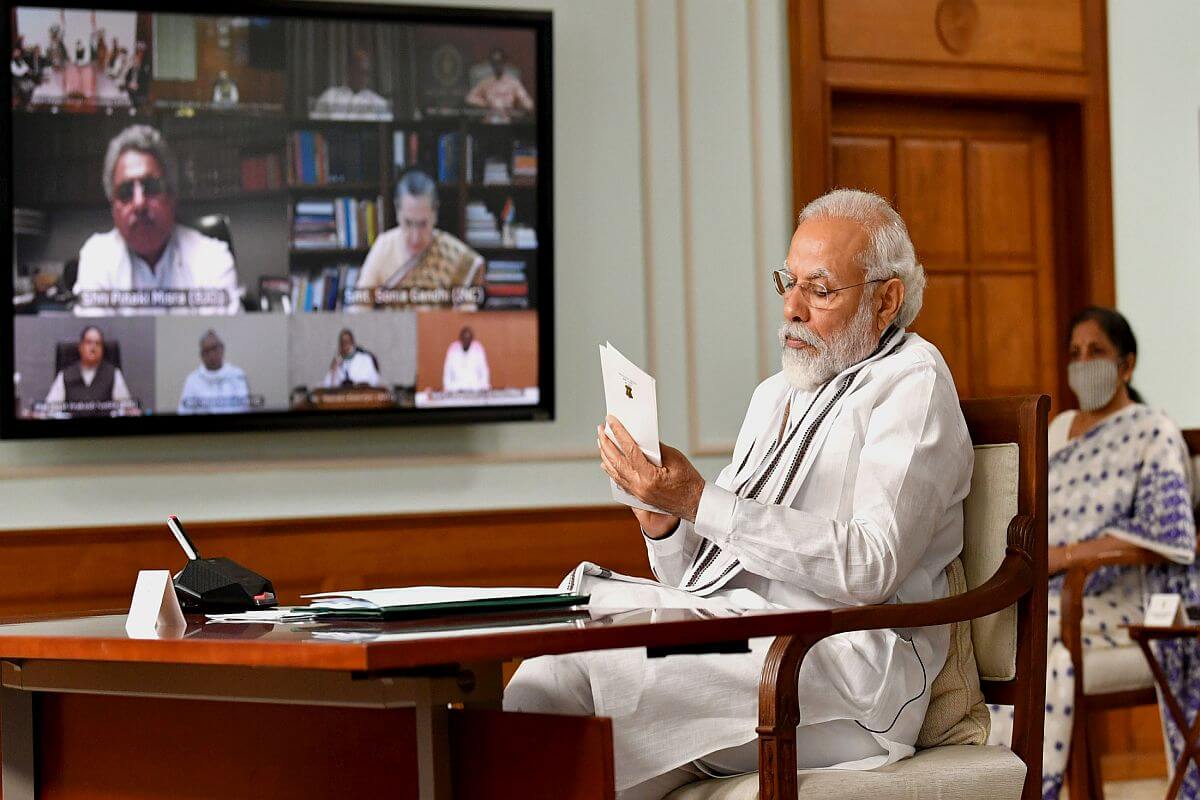In the upcoming week, India and China are scheduled to conduct diplomatic meetings to work towards the “mutual withdrawal of forces”. It is hoped that these talks will end the ongoing hostilities between the two Asian nations that have risen since the July 15 skirmish at LAC and led to increasing military activity from both sides.
Also Read: India-China Border Clash Turns Violent, 20 Indian Soldiers Killed
On Friday, Indian Prime Minister Narendra Modi conducted an All-Party Meeting to discuss the increased violence in the Galwan region. Following this, PM Modi released a statement, which read: “Neither anyone has intruded into our territory nor taken over any post. Our forces are doing what they have to do to protect the country, whether it is deployment, action or counteraction. Our patrolling capacity has increased due to newly built infrastructure, especially along LAC.” Further, he added that India was continuing to have diplomatic conversations with China.
However, this sparked doubts about the incident of June 15. Several opposition leaders, including senior members of the Indian National Congress, India’s most prominent opposition party, criticised the poorly worded statement of the Prime Minister, which was interpreted by several as acceptance of the fact that the incident occurred on Chinese territory. Ex-Prime Minister Manmohan Singh warned PM Modi of the “implications of his words” and said that China must not be allowed to “use his words as a vindication of their position.”
To clarify, the Prime Minister’s Office released a clarification of the statement. It read: “the Prime Minister’s observations that there was no Chinese presence on our side of the LAC pertained to the situation as a consequence of the bravery of our armed forces.” The statement called the criticisms by the opposition a “mischievous interpretation” of the PM’s address.
India continues to take action against the Chinese activities by revamping its military strategy and imposing trade sanctions. The Economic Times reports, “The routing of Chinese goods to India through their common trade partners, inversion in duty structures and the exploitation of ambiguities in origin rules have all come under the government’s scanner.” Through this, the Asia Pacific Trade Agreement, the South Asian Free Trade Area, and bilateral treaties with China and India’s common trade partners are being scrutinised as well.
Also Read: India Imposes Economic Sanctions on China Following the Death of 20 India Soldiers
Further, in its effort to strengthen its defence along the LAC, India is reassessing its “rules of engagement”. Defence minister Rajnath Singh said that the troops in the region have now been given the full freedom to “give a befitting reply”. This could perceived as an indication that India no longer wishes to oblige with the 1996 Agreement with China that “barred the two sides from using firearms.”
Meanwhile, the US continues to highlight its interest in the resolution of the conflict in the region. Previously, President Donald Trump previously offered to negotiate India and China’s ongoing conflict, which was immediately rejected by both the countries. Since then, the US has said that it is continuing to “talk” to both sides. Trump said, “They’ve got a big problem there. They’ve come to blows, and we’ll see what happens. We’ll try and help them out.” However, unlike President Trump, Secretary of State, Michael Pompeo has not shied away from taking sides in the conflict. On Friday, in the Copenhagen Democracy Summit, he called China a “rogue actor” for Asia and the rest of the world. He said, “the PLA has escalated border tensions – we see it today in India, the world’s most popular – populous democracy.”
India-China Border Dispute Coverage:
- India-China Skirmishes in Sikkim and Ladakh Leave Several Soldiers Injured
- Indian Army Chief Addresses Simmering Tensions with Nepal, China, and Pakistan
- Multiple Chinese Army Incursions Reported Along LAC, Indian Army Chief Takes Stock
- PM Modi Meets With Top Military Brass to Discuss Escalating Indo-China Border Tensions
- Donald Trump Offers to “Mediate” India-China Border Dispute
- Modi and Morrison Deepen India and Australia’s Strategic, Diplomatic, and Economic Ties
- PLA Keeps Up Pressure on LAC Amid Border Tensions with India
- India, China Increase Military Presence Along LAC
- India and China Pull Back Troops From Three Key Areas in Eastern Ladakh
- India-China Military Commanders Continue Dialogue in Eastern Ladakh
Image Source: The Statesman

